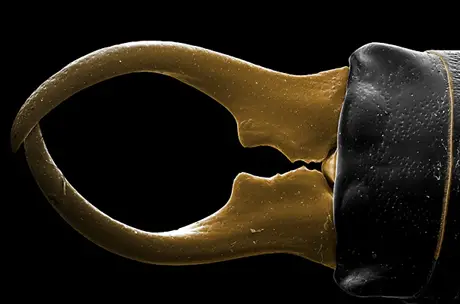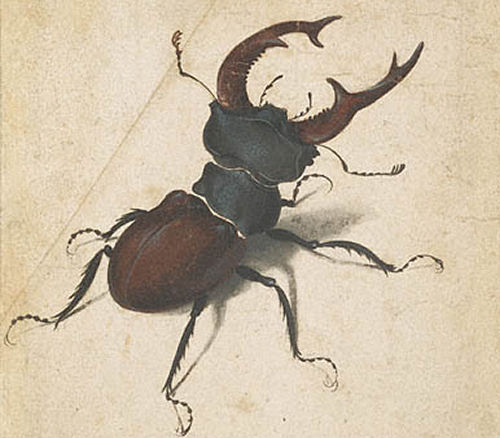Pecan Weevil
The pecan weevil is a tree insect which can do great harm to the trees they are named after.
The adults are a light brown or grey, and are about 12 mm long, with a very long beak that can be as long as its own body.
The male is not quite as large as the female.
The larvae are white and fat legless grub type insects with red brown colored heads.

pecan weevil
They live in pecan and hickory nut trees and may be very damaging to the trees, in more than one way. They feed during the watery stages of the hardening of the nut shells, and cause the damaged tree fruits to fall to the ground.
Weevils winter over as larvae and even as adults they live in the soil.
The come out of the dirt between July and October. Most will emerge in August and September.
When the nuts which are growing get to a stage called dough stage, the females will lay two to four eggs in different places inside the nut.
The larvae will hatch and eat for about a month inside the nut, and then leave it in the last part of September.
The nuts will show small holes where the tiny weevil enters and exits.
They do the most damage by eating the nut inside the shell and then the empty shell falls to the ground.
The damaged nuts can be easily spied by the small hole where the larvae have left it.
About December the beetles will drop to the ground and burrow under it up to a foot in depth. They will stay there for about a year. After a year as larvae, they will pupate and stay inside a cell.
This lasts for several weeks, until they come out of the ground as adults the next summer.
There can be one new generation each two years.
Adults will spend their entire life in the pecan tree or hickory tree unless they are removed by the use of pesticides or predators.


